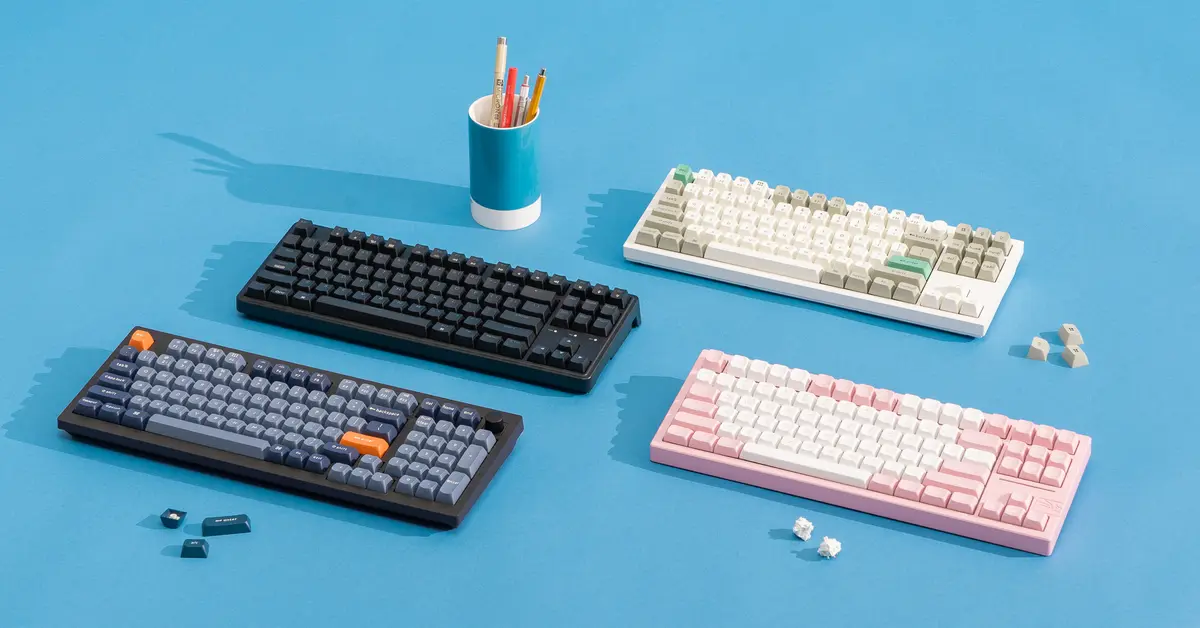For someone who enjoys working with technology, building mechanical keyboards can be an interesting and rewarding hobby. Mechanical keyboards are customizable devices made from various parts, allowing for endless design possibilities and unique looks.
First, there are different types of keyboard sizes, ranging from 40% to 100%. Smaller keyboards offer more mouse space, making them ideal for gaming or working in tighter spaces. A popular size among gamers is 60%, which, despite having fewer function keys, is preferred for the extra room it provides for mouse movement. Smaller keyboards are also more portable than larger ones and are easier to take on the go. On the other hand, full-sized (100%) keyboards, which are the most common, are ideal for multitaskers. They offer more productivity features and functions than their smaller counterparts.
Furthermore, there are the keyboard switches, which are the components placed between the keycaps and the PCB (Printed Circuit Board). The main types of switches are linear, tactile, and clicky. These switches are often made by different manufacturers, each with its own color coding and unique characteristics. Linear switches, often marked in red, provide a smooth and light keystroke, with no tactile bump. Tactile switches, typically brown, have a slight bump that provides feedback when pressed. Clicky switches, commonly blue, are known for their louder, distinct “click” sound. This sound is caused by a metal component in the stem that causes a wire to snap into place when pressed.
Lastly, keycaps are the part of the keyboard that you type on. They come in various profiles, which determine their height. Keycap profiles can range from as low as 2.3mm to as high as 16.5mm. While most keycaps are made of plastic, some can be made from other materials like metal or wood. Keycaps can also be customized with different fonts, shapes, and themes to match the design of the keyboard, giving users even more ways to personalize their setup.
Overall, building mechanical keyboards can be a fascinating and creative hobby, particularly for those passionate about technology. These keyboards are used by people in many everyday activities such as writing, typing, and gaming. Though building a mechanical keyboard can be a complicated process, it is also a fun and rewarding activity for anyone who enjoys creating something functional and personalized. The sense of accomplishment that comes with assembling a custom keyboard, along with the satisfaction of using a uniquely tailored device, can make the effort well worth it. Whether you’re a casual user or an enthusiast, this hobby offers a blend of craftsmanship and technology that can be both enjoyable and fulfilling. As you delve deeper into the world of mechanical keyboards, you’ll find an ever-expanding community of creators, making it easy to learn, share, and grow your skills.






























